[Note: this post has been completely rewritten as of 12/19/14. The previous conclusions were in error because of discrepancies between the way that DCRAW unpacks the .ARW files fom this, and presumably other a7 cameras, and the way that the camera reports itself to RawDigger and other programs. To DCRAW, the a7II is a 12 bit camera with a black point of 128, not a 14-bit camera with a black point of 512. I’ll explain more in a future post.]
I’ve got a Sony alpha 7II to test. Rather than start off with the OOBE and my usual rant about the terrible menu system, I’m going to put the camera through some of the analyses that Jack Hogan and I have been developing.
Today, it’s photo response nonuniformity (PRNU). There are some surprises.
Here’s how the standard deviation of a 256-image flat-field exposure near clipping converges as the images are added in, with a high pass filter in place to mitigate lighting nonuniformity:
The overall PRNU is about 0.35%, and there’s no important difference between the channels.
Here’s the frequency response of the first green channel of the unfiltered version of the averaged image:
The red channel:
And the blue channel:
A note about these spectra. Half the sampling frequency is on the right, and DC, or zero frequency, is on the left. The frequency scale is linear so that one octave is spread across the right half of the chart, and the next lower octave is from 1/4 to 1/2 way across the graph. The vertical axis is logarithmic, The blue horizontal frequency curve is excited by vertically oriented features in the image; and the red vertical frequency curve is excited by horizontal features in the image.
There are substantially more spiky places in the red and blue channels than in the green. Because the images were exposed under D55 illumination, the red and blue mean values are about a stop down from the green ones, and thus correction to full scale will multiply them by a larger number, but in the standard model for PRNU, that should all average out.
Here’s a histogram-equalized look at one of the green channels averaged and high pass filtered (with a 99×99 kernel) image:
There’s quite a bit of dust for a brand new camera — I just took it out of the box, mounted a lens, and made the exposures — but it certainly won’t interfere with photography, or even be visible without the super-aggressive equalization.
Here’s the blue channel:
In spite of the differences in the spectra, the visual differences aren’t striking.
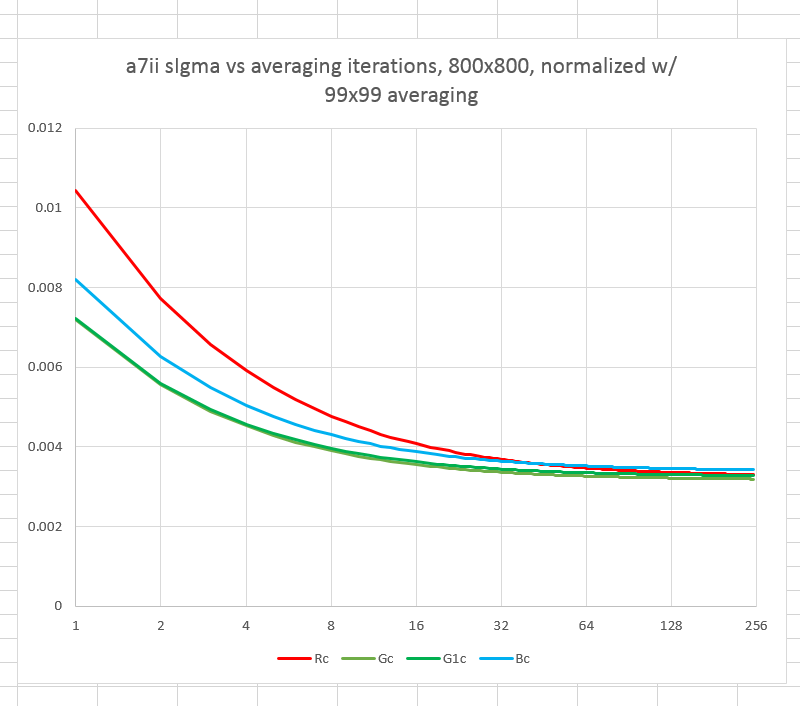
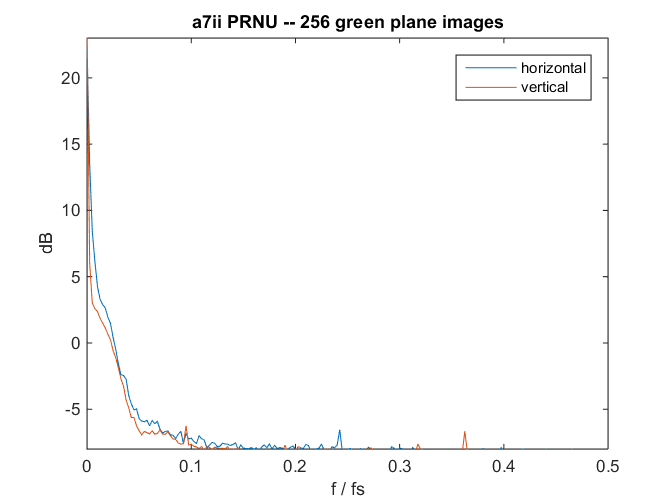
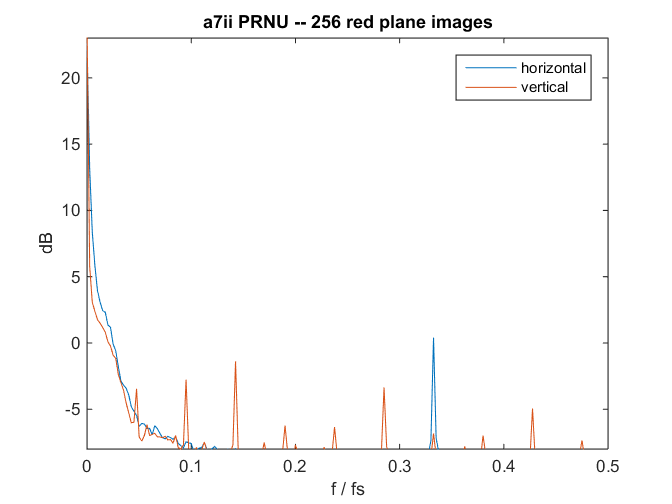
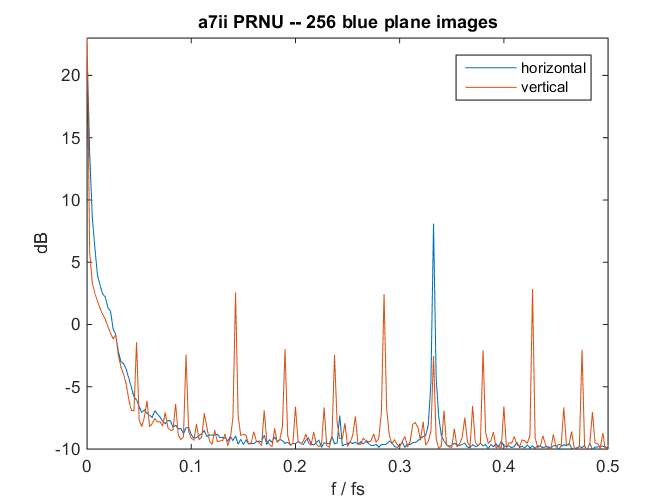
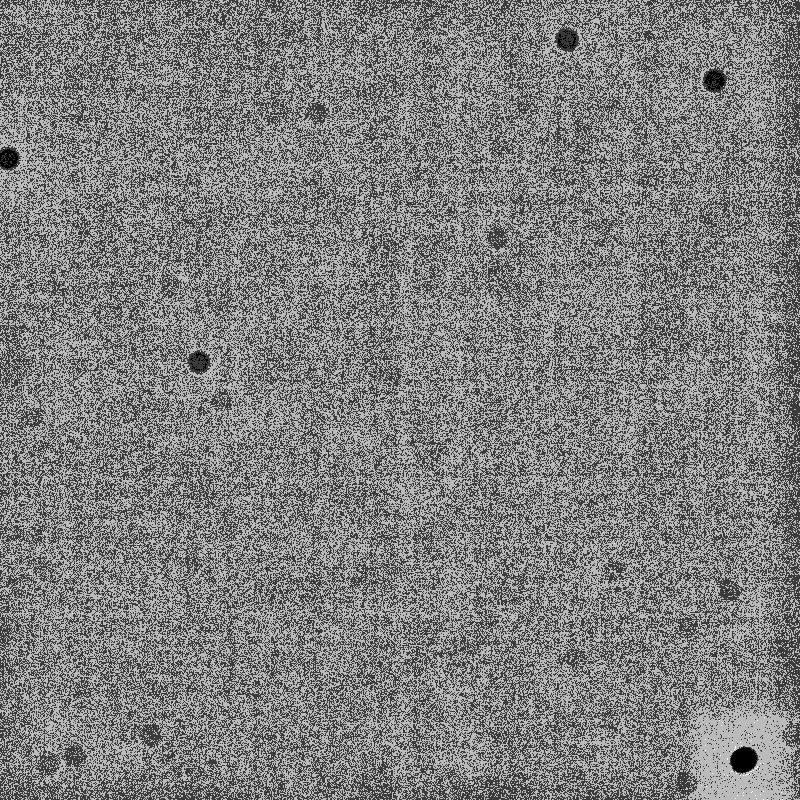
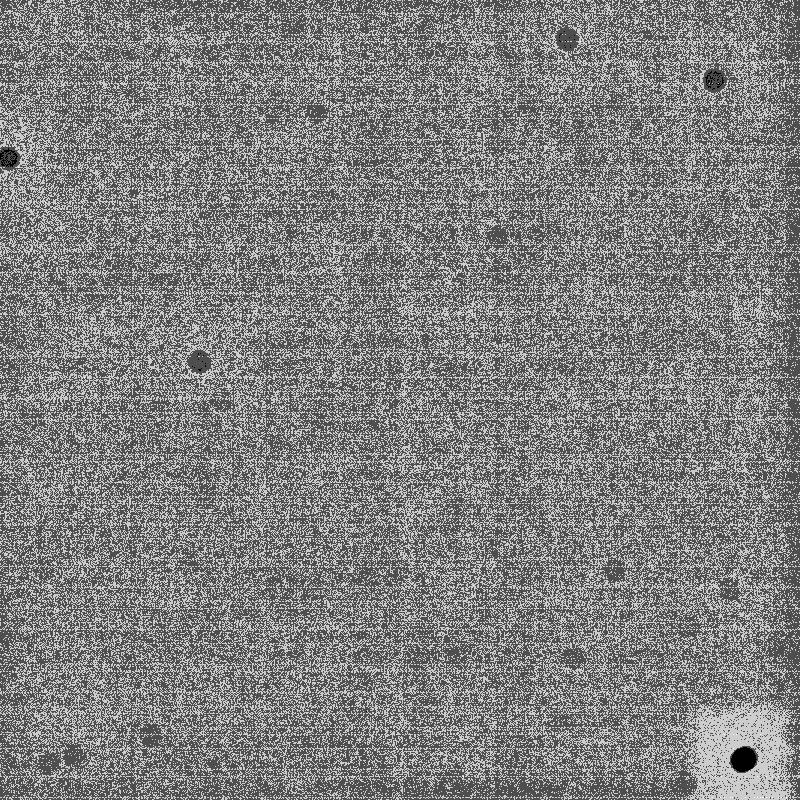
Hi Jim,
I am glad that you choose A7II for this round of measures 🙂
As the PRNU looks unusually high may be it’s the on sensor PDAF pixels (half masked) the reason for this .. I mean that as these pixels receive half the light this should result in more FPN.
It would be interesting if you could detect these pixels ..
I found strange that for A7 (on sensor PDAF also) Bob (sensorgen) calculated from DxO data 1/3 stop less QE !!
As you can see from my edit of the original post, the high PRNU was due to my misunderstanding of the way that DCRAW decoes a7II files. Fixed now.
Jim